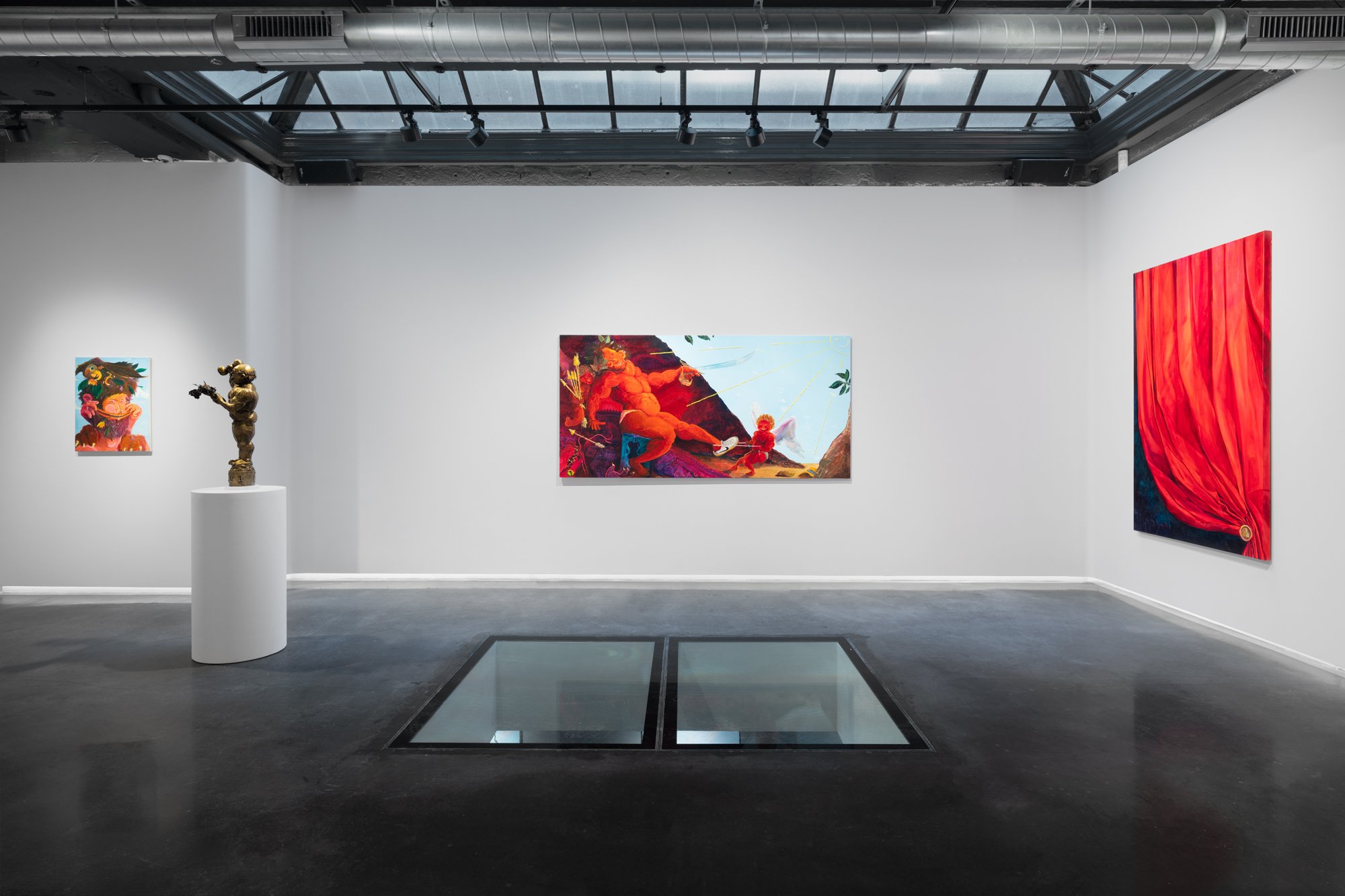
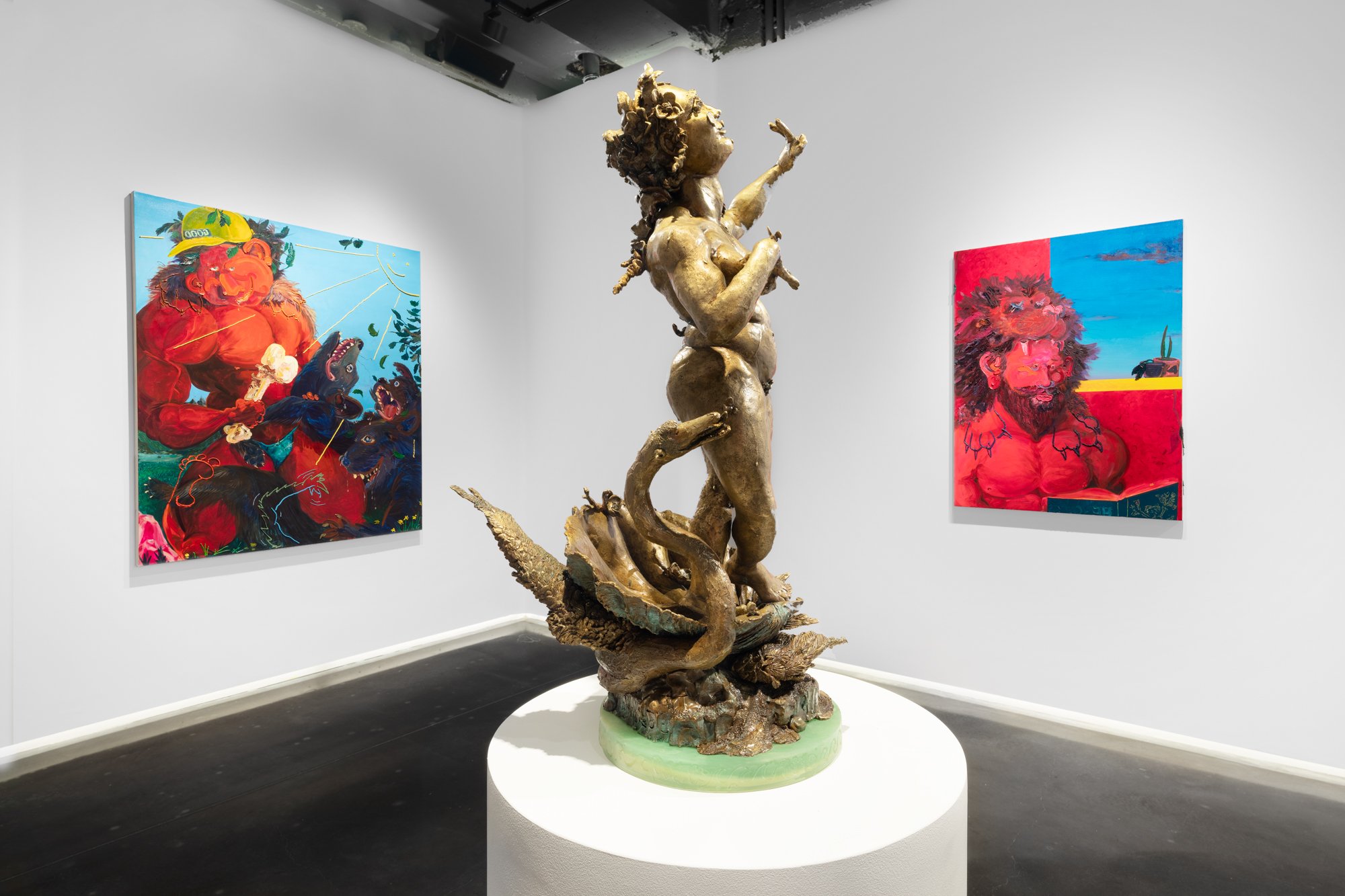
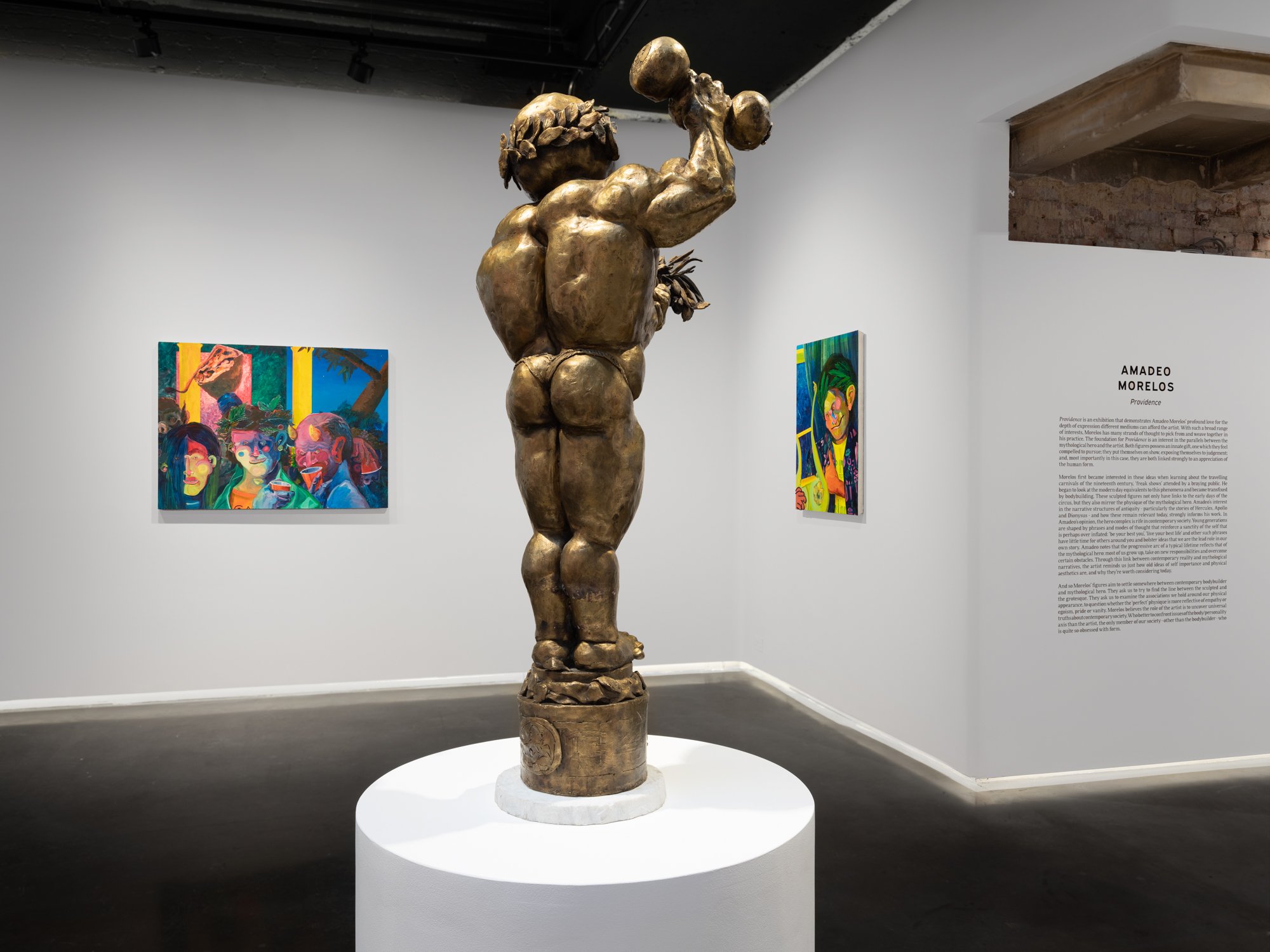
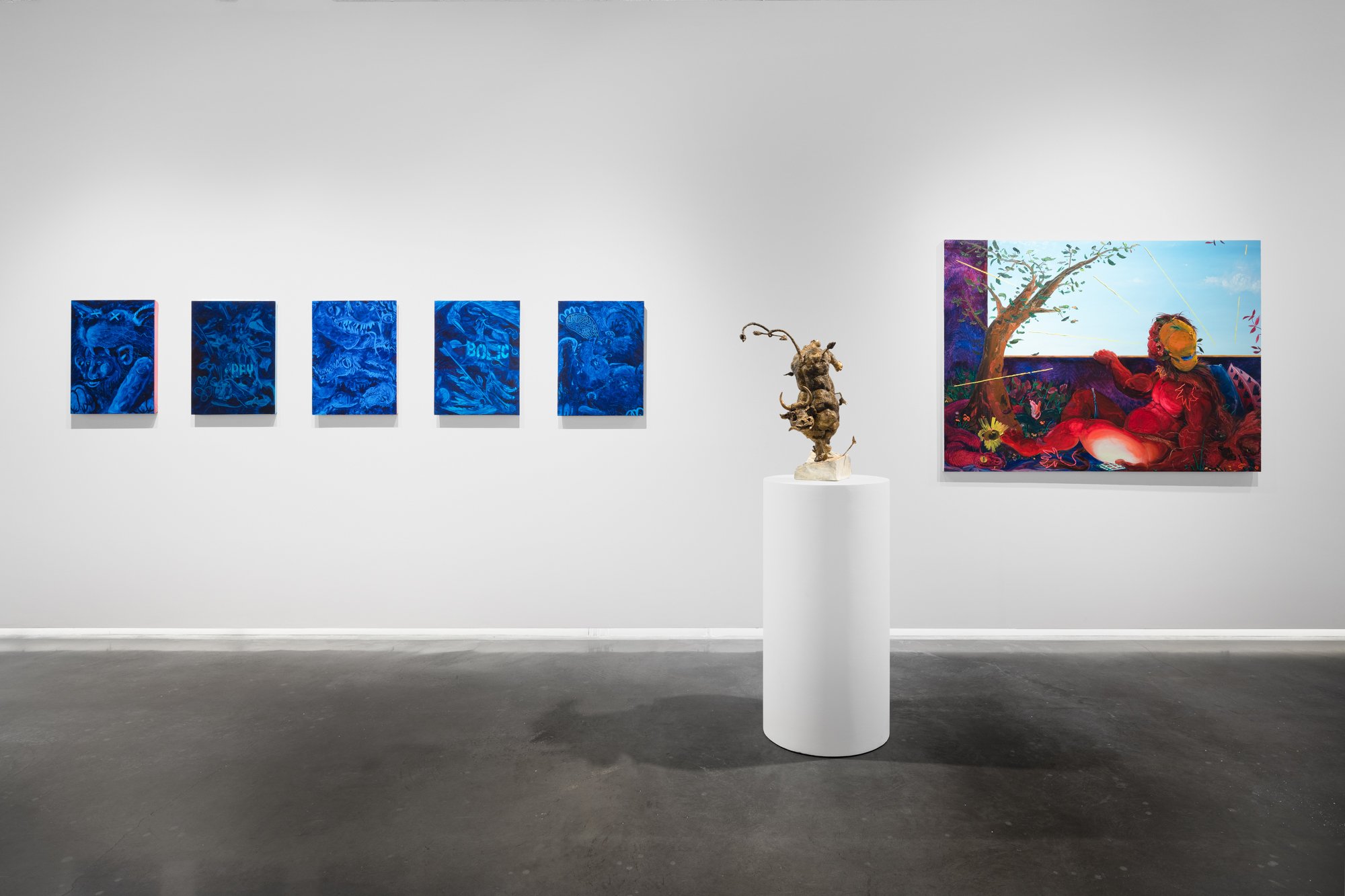

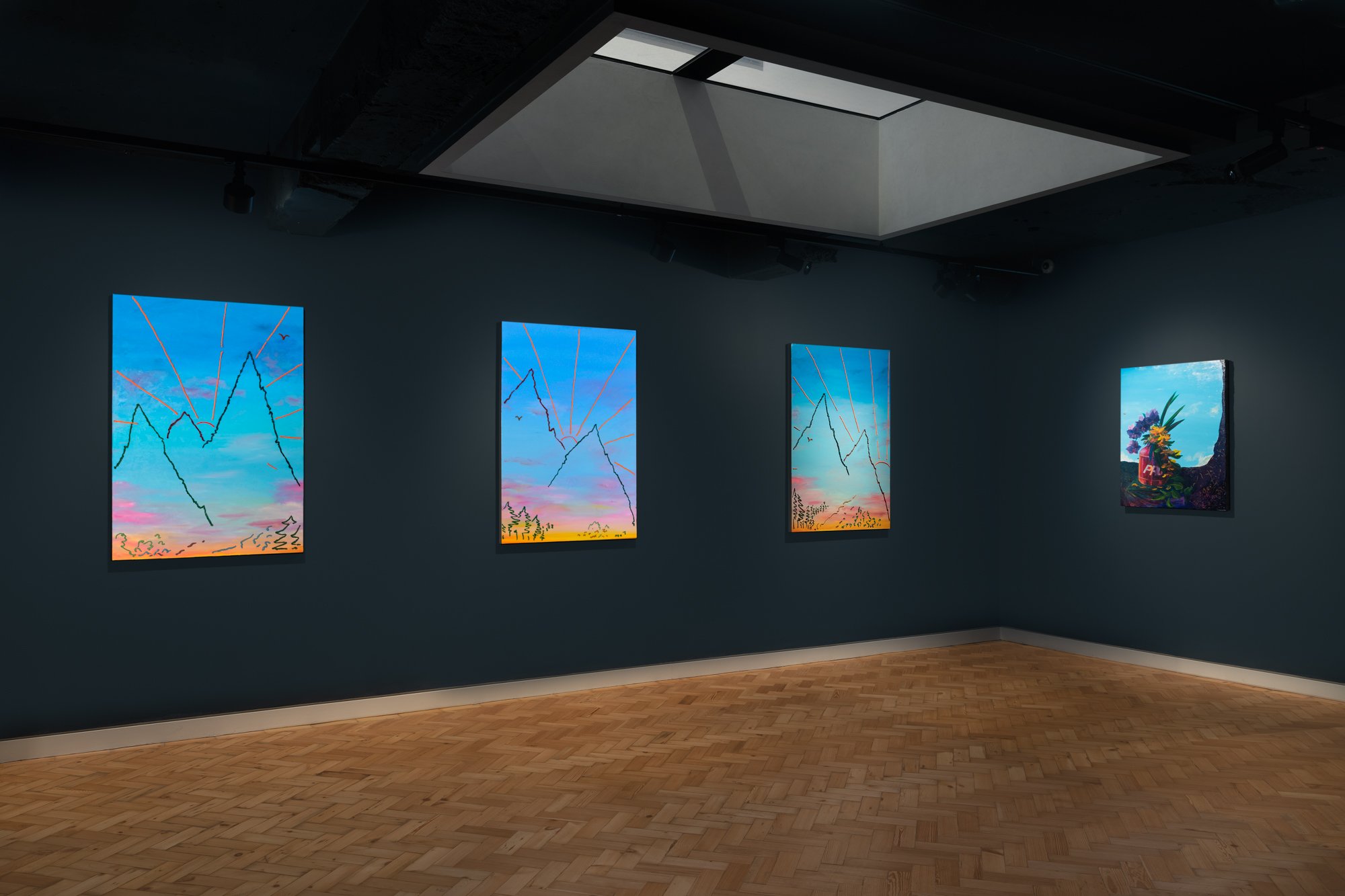

Providence: Downtimes of the Deities
By Susanna J Coffey
Introduction
What could those far-famed Olympian gods, demiurges, and champions be up to these days? Where did Hercules Invictus, Phoebus Apollo, Zeus the Thunderer and their crew go after being driven from their mountain by hordes of Gore-Tex-clad backpacking tourists? Resting on laurels, donning the old lion skin, strumming a harp, drinking a can of C4 instead of Ambrosia maybe?
In a way Mr. Morelos has been involved with this subject, the heroes of classical mythology, since boyhood. Every child must find signposts that can help navigate the often-bewildering odyssey from youth to adulthood. For Amadeo the classical sagas of epic journeys spoke to him, promised adventure and pictured for him the possibilities of a colorful future. His imagination was ignited by these stories as he traveled from home in Morelia, Mexico to study art at Chicago’s Art Institute. It was there I saw Amadeo bring these mythic figures to vivid life in his paintings, drawings and sculptures. When I first entered the studio, I was overwhelmed by the immediacy and intelligence of the work. The figurative pieces I saw were so intentionally unidealized, so expressive of the uncertainty I saw in the faces of the young artists I teach. How could one, his painting seemed to say, believe in these macho images of mythic heroes, the ones that so permeate our contemporary popular culture? How vulnerable, comedic, pathetic and true his protagonists seemed!
Amadeo Morelos’ gorgeous, vibrant paintings, drawings and sculptures show us something of how our Grecian gods and heroes might look in today’s world. In this exhibition, we see these mythic beings portrayed in rich color and texture, as wonkily beautiful and certainly less than heroic. They seem almost the opposite as they try to get their musclebound bodies to shoot an arrow, capture prey, get the girl or even pluck some music from a colorful broken lyre. Mr. Morelos’ colorful pantheon is less likely to slay Nemean Lions and kill Chimeras than to pump iron at some strip-mall health club. After all, when Zeus brought Hercules to Mt. Olympus he declared Hercules the God of Gymnasiums. As Apollo turns toward us in the painting “Window Apollo” he still wears the laurel wreath but has exchanged his toga for a sky-blue sport shirt. Inside his dark room, its walls sgraffitoed with cartoonish snakes and cherubs, his tiny eyes are puffy red, he’s hungover maybe? What happens in “Playing the Lyre” when Phoebus, god of music, tries to pick a tune on his broken stringed instrument? He seems confused, unsure of his ability.
Yes, Amadeo is bringing us into a world of mythic champions, but no one here seems particularly valiant. Rather they seem bemused or confused about the role each has been cast into. And that role “The Hero” is one that has been with us for millennia. For ages these ancient Greek divinities have defined our idealizations of manhood as being decisive, forceful, hard, invulnerable, successful, strong and triumphant. Mr. Morelos’ beautiful paintings show us a more nuanced vision of these heroic figures, another idea about strength itself.
Although Morelos’ work in this exhibition is closely related to a literary narrative it is certainly not illustrative in the ordinary sense. One need not know the backstory of his protagonists to get a sense of what the iconography is revealing. The vibrant color and gesture in every drawing, painting and sculpture gives each piece a sense of energy and life.
His palette is a hot, saturated one. Not cool marble-white, the bodies of Hercules, Apollo, Bacchus, are brightly hued. These musclebound guys are colored sweet, hot red or fleshed like a rainbow. The stars of this show are big and brawny, but their strength seems questionable. Sensuous paint renders them luminous, multicolored and seemingly soft-skinned.
The still lives and small landscapes are also made with full-tilt chroma. The sense of brightness in these comes from the glowing pigments themselves rather than from any depicted moon or sun. The celestial blues, soft pinks and pale golden yellows in the “Untitled (Sunset)” paintings are overlaid with elegant line drawing. Landscapes from a child’s dream of empyrean realms, the series was inspired by the artist’s read of Thus Spoke Zarathustra. Paintings of flowers, foliage and small objects are mostly monochromic. Rich blues, purples and reds, are at once dark and bright and have the look of relief sculpture. It takes time to decipher the imagery, as it slowly arises from expressive, tactile, brushstrokes.
Morelos’ untitled drawings are populated with the same cast of characters as the paintings but have quite a different look and feel. Amadeo has formed these delicate, silvery, soft and luminous pieces with careful detail. They depict more quiet places; intimate rooms and Arcadian romps that suggest more playful and upbeat moments. Like much art from the Baroque and Rococo periods all the paintings and drawings seem to be full, almost overflowing, roiling with action and gesture.
The larger canvasses are almost cinematic with narratives that are robust in both subject and form. These gods and heroes are not performing feats of derring-do but neither are they lounge lizards. Mr. Morelos painterly hand animates his figures and all aspects of their environments. While his figures are portrayed as being awkward and ambivalent, the paint itself is graceful and assured. His loaded, painterly brush acts like a carving tool that limns the imagery in broad, gestural moves. The paintings are made with the same lush curving, volumetric strokes that one sees in his sculptural pieces.
The three free-standing bronzes reveal the influence of European artists like Gian Lorenzo Bernini and Clodion (Claude Michel) who also worked with classical narratives. They are sculptors who also revealed a darker take on their Olympian subjects. But one could also look closer to home for Amadeo’s art historical roots. Growing up in Michoacán, he was surrounded by fountains, paintings and statuary created by artists of the Mexican Baroque period like Miguel Cabrera and Cristóbal de Villalpando. In the parks and churches of his home town of Morelia the artist would have often passed by these narrative, often polychrome sculptures that reference cultural, often religious narratives. But while the stylistic roots of Morelos’ sculpture are apparent, the pieces themselves are not postmodern pastiches but are purely personal and represent a deeply felt and carefully considered emotional reality.
Perhaps the best commentary on his work is his own. Amadeo says of his art “My work often borrows from classical art, philosophy, mythology. I set together contemporary, mythical and autobiographical symbols and make a pathetic and humorous attempt to relate my mundane and fleeting experience to the glorious spectacle of ancient myths. Male figures reminiscent of contemporary body builders take on the role of Hercules, Apollo, Zeus etc. and question the grandiose meaning that myth and folklore give to life.” He says of his protagonists that they are “freaks sculpted by the desires of contemporary culture who wander within the space between narcissism and a state of becoming”. Eloquently said. I find that the artwork of Amadeo Morelos is not in any way ‘freakish’ but instead gorgeously, astutely envisions our collective, pathetic, funny, beautiful, failed attempts to mimic the perceived perfection of those whom we mythologize.
By Susanna J Coffey